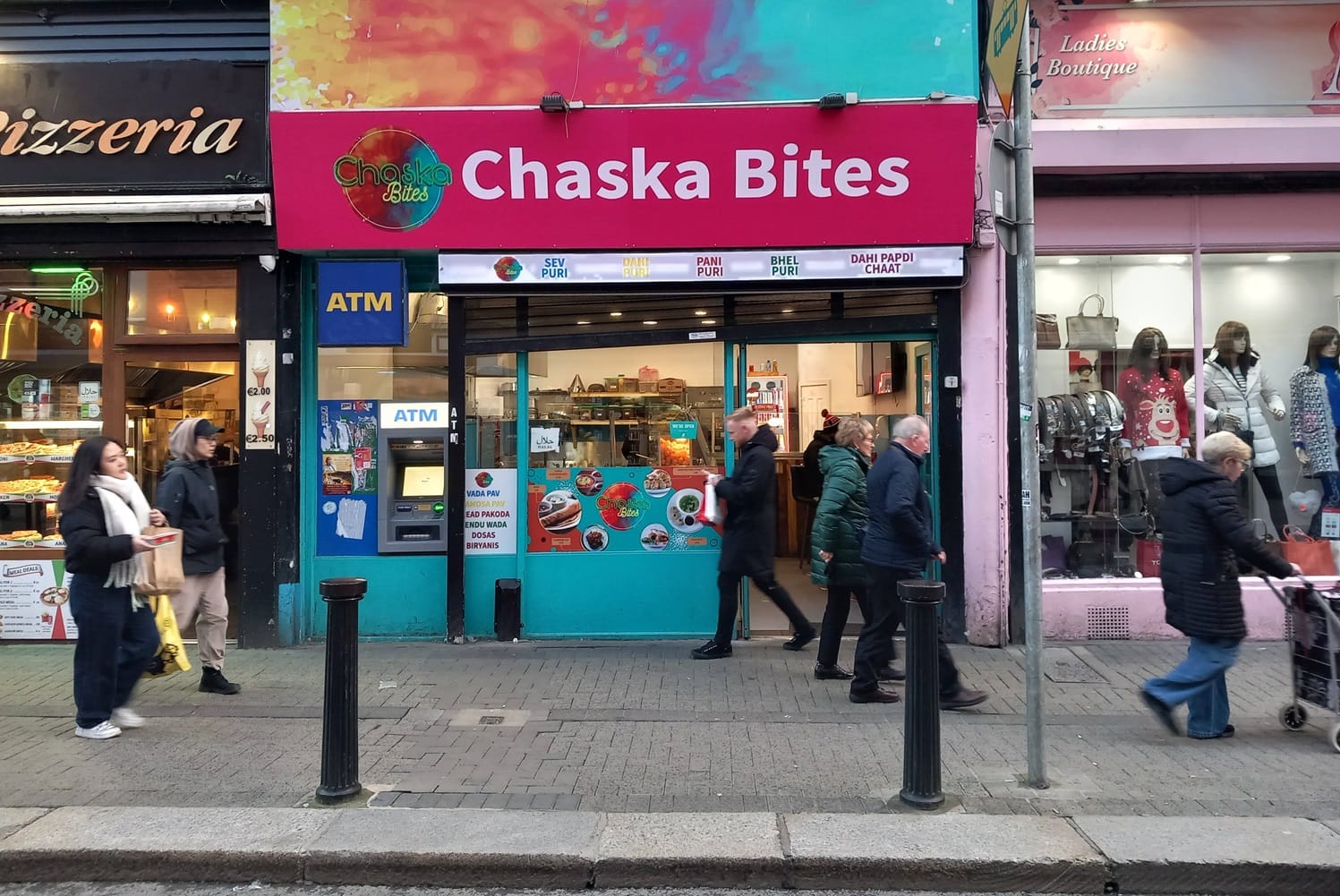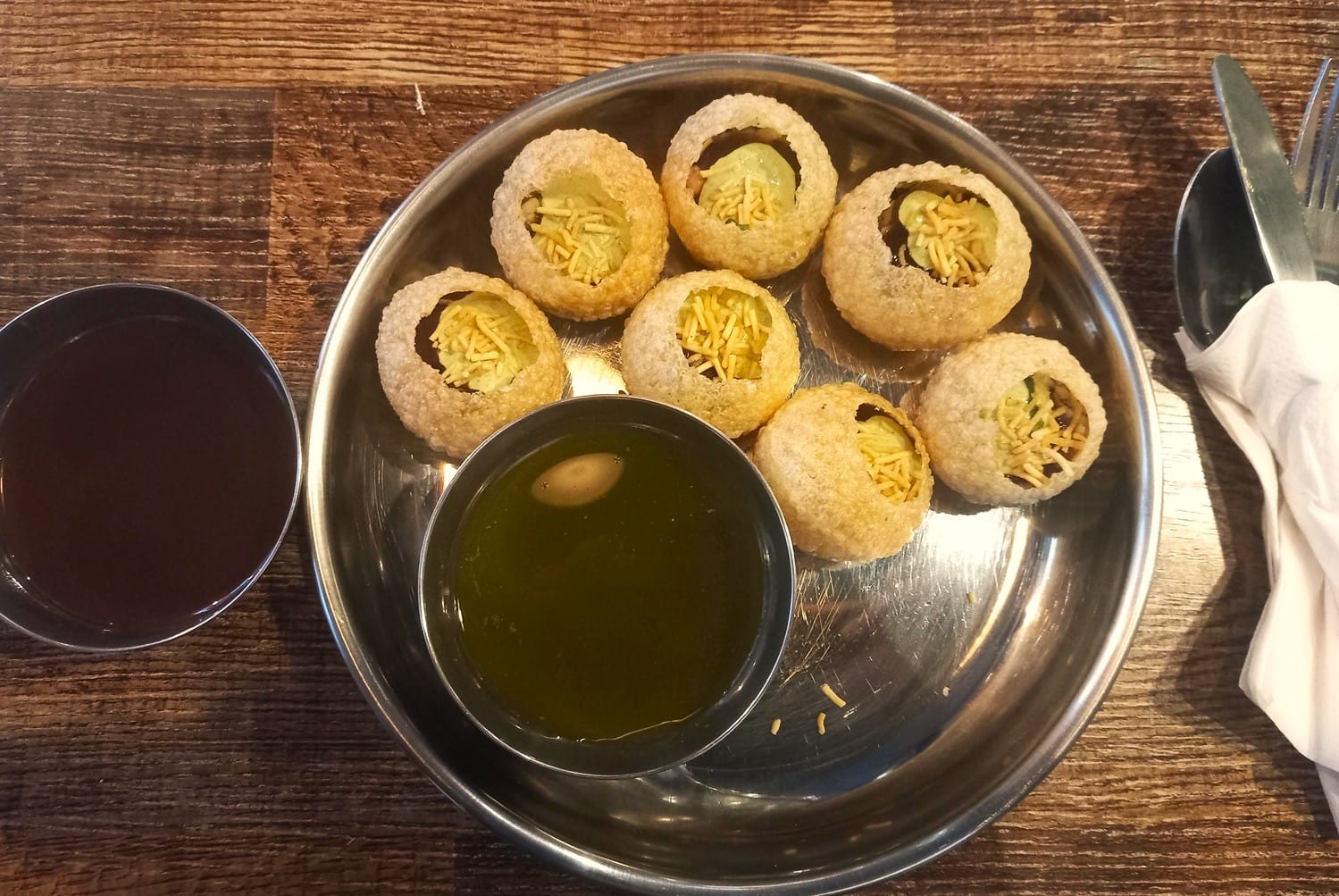What’s the best way to tell area residents about plans for a new asylum shelter nearby?
The government should tell communities directly about plans for new asylum shelters, some activists and politicians say.
Restaurants around the city centre serve the South Asian snacks pani puri, dahi puri, sev puri and other variations on the theme.

At Chaska Bites on Monday, Amit Thakur is behind the counter, wearing his white double-breasted chef’s coat, assembling a snack for a customer.
It’s cold out and the people hustling by on the north inner-city’s Talbot Street are mostly wrapped up in winter jackets and woolly hats.
In this tiny shop – with its open kitchen surrounded by plexiglass, and a few counter seats to perch on to eat – it’s chilly too.
Thakur arranges seven small balloons of deep-fried dough on a plate. They are paper thin, translucent and crispy.
There’s a big round hole punched in the top of each one, and Thakur spoons in a mixture of potatoes, chickpeas and spices.
Now it’s decision time: how to finish them?
If Thakur serves them with a little cup of spicy mint-flavoured water, and a cup of sweet and sour tamarind-flavoured water, then they’ll be pani puri, he says.
If he adds yogurt, plus ribbons of thick mint sauce and tamarind sauce, and a dusting of crispy bits over the top then they’ll be dahi puri, he says.
If he puts in onions and chopped green chilis, and dusts the tops with crispy bits, then that’s sev puri, he says.
However he finishes them, “you have to put the whole thing in your mouth at once”, Thakur says. “Then you feel the flavour – sour, sweet, everything’s a mixture.”

In Chaska Bites, and other restaurants and shops in the city, these snacks have been popping up – as Dublin’s South Asian population grows, and with it the diversity of foods from the region that’s on offer in the city.
“Back in India it’s a very popular kind of street food,” says Steephan George, manager at the restaurant Kasi on Crow Street in Temple Bar, which also sells them.
“It’s a kind of a snack that people eat while they are going after work to home,” he said Monday.
For about €5 to €8.50 for a plate of six or seven, they’re not a meal that’ll fill you up, just a quick indulgence: a crunch full of your chosen mix of chilli, spices, and sweetness.
Sitting at a long wooden table inside his Chaska Indian Restaurant near the Mayor Square-NCI Luas stop in the north Docklands on Monday, Zain Zaidi talked about the evolution of South Asian food in Dublin.
“I was in London 28 years, that’s where I grew up. I always – I’m a foodie,” says Zaidi. “In England we had a restaurant back in the ’90s and I worked in a few.”
When he came to Dublin, it seemed natural to set up his own. He didn’t see any Indian restaurants north of the Liffey, he says.
“Like, you have Pickle, Diwali, Kathmandu – all on the south side,” he says. So he set up several spots on the north side.
As the years have passed, the South Asian population of the country, and of the city, has shot up, Zaidi says.
In the past decade, the number of people born in India, Pakistan or Bangladesh and living in Ireland has risen 162 percent, census data shows.
Between the 2011 census and the 2022 census, the number rose from about 29,000 to about 76,000. Of those, about 30,000 lived in Co. Dublin in 2022.
Also in this time, more restaurants have opened to serve the cuisines of those countries.
“In the last two years like 15 places have opened, just within the city centre,” says Zaidi.
And as the scene has grown, the variety of regional specialties has grown too.
In recent years, for example, there’s been a surge in places offering south Indian specialties, he says. Like dosas and idli.
He ticks off names: Andhra Bhavan on Marlborough Street, Indian Tiffins on Parnell Street, Hyderabadi Kitchen on Camden Street.
Among the dishes that seem to be newer to Dublin are pani puri and the variations of it that Thakur, the chef at Chaska Bites, was dishing up on Monday.



While Zaidi’s Chaska Indian Restaurant in the Docklands is an upscale, sit-down place with prices to match, this little street-food shop on Talbot Street is designed to be more affordable, he says.
“The crowd that is coming over from most of the countries are students, and back home, wherever they come from, street food is very popular,” Zaidi says. “And as soon as they see it they want to have it, to feel connected to home.”
Pani puri – also known as golgappe – is a classic street food in north India and Pakistan, says Zaidi. Over at Kasi, manager George says the same.
In South Asia it’d be more usual to sell pani puri from a kiosk under an awning, literally on the street, George says. “Here we can’t sell them on the street, though.”
There are other differences too. At Chaska Bites and Kasi, and at Mini India on Westmoreland Street, the pani puri is sold with the flavoured waters on the side.
(At Mini India, the potato and chickpea filling is served on the side too, and diners must break open the puri puffs, fill them up and then pour the water in.)
By contrast, instead of these dainty cups on the side, at a kiosk on the street in India, there might be a big vat of flavoured water for people to dip their filled puri puffs into, says Zaidi. That wouldn’t be a go-er in Dublin, though, he says.
“Hygiene,” says Zaidi. “In India, Pakistan, anything would work and people wouldn’t care but here it’s – when in Rome do as Romans do.”
For those who want to try dipping their pani puri into a pot full of flavoured water, though, they can do it at home.
Mini India, and also Bengal Asian Groceries on Thomas Street, sell boxed-up pani puri kits. Inside are a bunch of the crispy puri puffs, plus mixes to make the flavoured waters.
“I think it’s one of the most traditional street foods in the subcontinent, and very very popular,” Zaidi says. “ Like, growing up, that’s something everybody, everybody would have.”
Get our latest headlines in one of them, and recommendations for things to do in Dublin in the other.